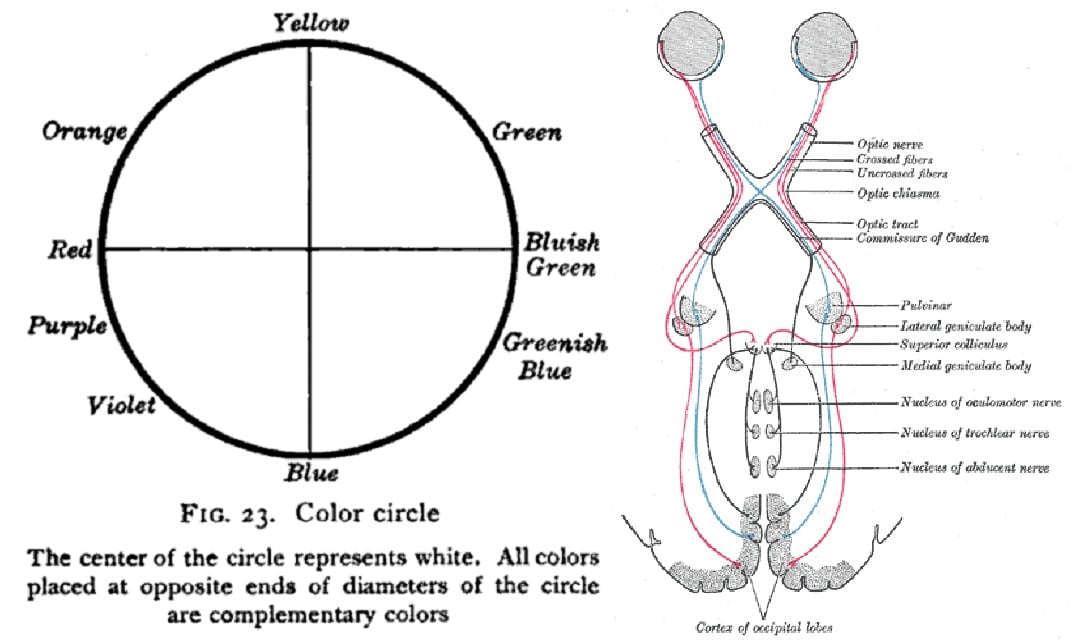Unique hue is a term used in certain theories of color vision, which implies that human perception distinguishes between “unique” (psychologically primary) and composite (mixed) hues. A unique hue is defined as a color which an observer perceives as a pure, without any admixture of the other colors. There is a great deal of variability when defining unique hues experimentally. Often the results show a great deal of interobserver and intraobserver variability leading to much debate on the number of unique hues. Another source of variability is environmental factors in color naming. Despite the inconsistencies, often four color perceptions are associated as unique; “red”, “green”, “blue”, and “yellow”.
History
Hering’s opponent process theory
The need for certain hues to be designated as unique came with the advent of Opponent process theory. Ewald Hering first proposed the idea that red, green, blue, and yellow were unique in 1892. His theory suggests that color vision is based on two opposing axes of color: a red-green axis and a blue-yellow axis. This theory is based strongly on the existence of perceptually impossible colors or color hue mixtures that have no meaning such as redgreen or yellowblue. These colors are perceptually impossible and suggest an opponent relationship between red and green, and blue and yellow.
Physiological evidence
Signal path from the eyes to the LGN.
There has been considerable effort in neuroscience to establish physiological mechanisms correlating to the existence of unique hues. For some time it was thought that the opponent process was explained through two chromatic mechanisms inherent in the way signals from the three cone types (Long, Medium, and Short wavelengths) on the retina are processed. The first mechanism represents the red-green L-M process. The blue-yellow process was thought to be based on a similar (L+M)-S process. Recent research has shown that this (L+M)-S process does correspond to yellow as a unique hue. This has led to the idea of unique hues being a result of higher order processing in the lateral geniculate nucleus (LGN).
Cultural variability
Unique hues have played an important role in understanding Linguistic relativity or the idea that language has a significant influence on thought. The way in which language and culture affects color naming is debated and not yet fully understood. The Universalist side of the debate argues that unique color terms are biologically tied to the human visual system and are the same regardless of language and culture. The Relativist side argues that language contextualizes thought and therefore perception, the idea being that having a different environment and culture causes the perception of the individual to be different.
Source From Wikipedia
